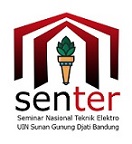Pemantau Keamanan Rumah Dengan Sistem PIR Dan Sensor Api Berbasis Arduino Uno Melalui SMS
Keywords:
Home Security Monitor, Arduino Uno, PIR Sensor, Temperature Sensor LM35, Fire SensorAbstract
Security Monitoring System is very important in human life. This refers to the awareness of the risks and potential hazards in and around the home that can cause physical or material harm to those inside the home as well as outside the home. A Security Monitoring system has been designed using PIR Sensor, Fire Sensor, LM35 temperature sensor. In this study Arduino UNO microcontroller serves as a data processing center obtained from PIR sensors to detect human movement, LM35 temperature sensor to detect the state of the room temperature, Fire sensors that will detect the presence of fire or not, and SIM800L to send home state information. Test results show that this system works well in accordance with system design that is the system responsive to human movement, temperature changes and the existence of fire. When there is a Human Motion detected the buzzer will sound and will send information via SMS "Movement Detected", If inside the system detects the flame, buzzer will sound and will send information via SMS "Fire Detected", to Mobile. When the room temperature is above or equal to 40 Cº buzzer will beep and send information via SMS "Temperature above Normal".
Downloads
References
Kadir, Abdul. 2014. Buku Pintar Pemrograman Arduino. Yogyakarta : Mediakom
Bejo, A. 2008. C dan AVR Rahasia Kemudahan Bahasa C dalam Mikrokontroller ATMega8535, Edisi I. Yogyakarta : Graha Ilmu



